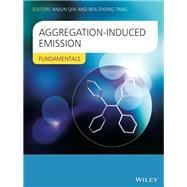Aggregation-Induced Emission: Fundamentals is the first book to explore the fundamental issues of AIE, including the design, synthesis, and photophysical behavior of AIE-active molecules and polymers. The control of the morphological structures of the aggregates of AIE-active materials, and the experimental investigation and theoretical understanding of the AIE mechanism, are also covered in this volume.
Topics covered include:
- AIE in group 14 metalloles
- AIE in organic ion pairs
- Red light-emitting AIE materials
- Supramolecular structure and AIE
- AIE-active polymers
- Enhanced emission by restriction of molecular rotation
- Crystallization-induced emission enhancement
- Theoretical understanding of AIE phenomena
This book is essential reading for scientists and engineers who are designing optoelectronic materials and biomedical sensors, and will also be of interest to academic researchers in materials science and physical and synthetic organic chemistry, as well as physicists and biological chemists.








